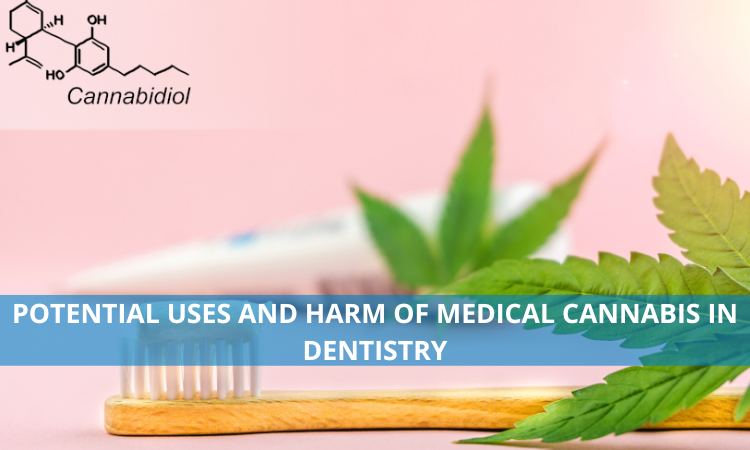
Examine the possible benefits and drawbacks of using medical cannabis in dentistry, including how it might be used to treat pain, anxiety, tension, nausea, and vomiting, as well as to promote dental health and prevent addiction and drug interactions.
Medical cannabis, often known as cannabis, has been used for millennia to treat a number of ailments, such as anxiety and chronic pain. Cannabinoids, the active ingredients in cannabis, interact with the body's endocannabinoid system, which controls various physiological functions, including pain, appetite, and mood. The potential applications of medical cannabis in dentistry have drawn increasing attention in recent years.
Due to the legalisation of cannabis in numerous nations and states, which creates new opportunities for treating dental diseases, the use of cannabis in dentistry is becoming a more often discussed subject. This article will examine the potential benefits and drawbacks of using medical cannabis in dentistry and how it can be utilised to enhance patients' quality of life and oral health.
Dental practices that might use medical cannabis
· Management of pain
Pain management is one of the most well-known potential applications of medical cannabis in dentistry. Analgesic effects of cannabis have been demonstrated, which can lessen pain and inflammation. Patients who suffer from chronic pain from ailments like temporomandibular joint dysfunction (TMJ) or trigeminal neuralgia may find this to be especially helpful.
· Management of stress and anxiety
Managing stress and anxiety is another possible dental application for medical cannabis. The anxiolytic effects of cannabis have been demonstrated, which can aid in lowering anxiety and tension. This can be especially helpful for patients with dental phobias or anxiety because it can make them feel more at ease and at ease during dental operations.
· Vomiting and nausea
As a possible side effect of several dental procedures or medications, medical cannabis may also be used to treat nausea and vomiting. Antiemetic qualities of cannabis have been demonstrated, which can lessen nausea and vomiting.
· Oral health
Medical marijuana may also be advantageous for your oral health, according to research. In a recent study, it was shown that cannabis oil might be useful in the treatment of oral thrush, a fungus that affects the mouth and throat.
The dangers of medical cannabis in dentistry
· Addiction
Addiction is one of the potential negative effects of medical cannabis in dentistry. Cannabis is a psychotropic chemical that can cause addiction and dependency if used frequently.
· Impairment
Impairment is another potential side effect of medical cannabis in dentistry. Cannabis usage can impair thinking and movement, which makes dental operations risky.
· Interactions
Drugs used in dentistry, as well as other medications, can interact with medical cannabis. The possibility of problems and adverse effects can rise as a result.
Conclusion
Dental professionals may find uses for medical cannabis, particularly in treating nausea, vomiting, anxiety, and stress. The possible risks of medical cannabis, such as addiction, impairment, and combinations with other drugs, must be understood. Before considering medicinal cannabis as a therapeutic option, speaking with your dentist or doctor is crucial because cannabis laws differ depending on where you live.

Dr Amna Bilal
The author is a contributing writer at Dental News Pakistan and can be reached at amna0795@yahoo.com

